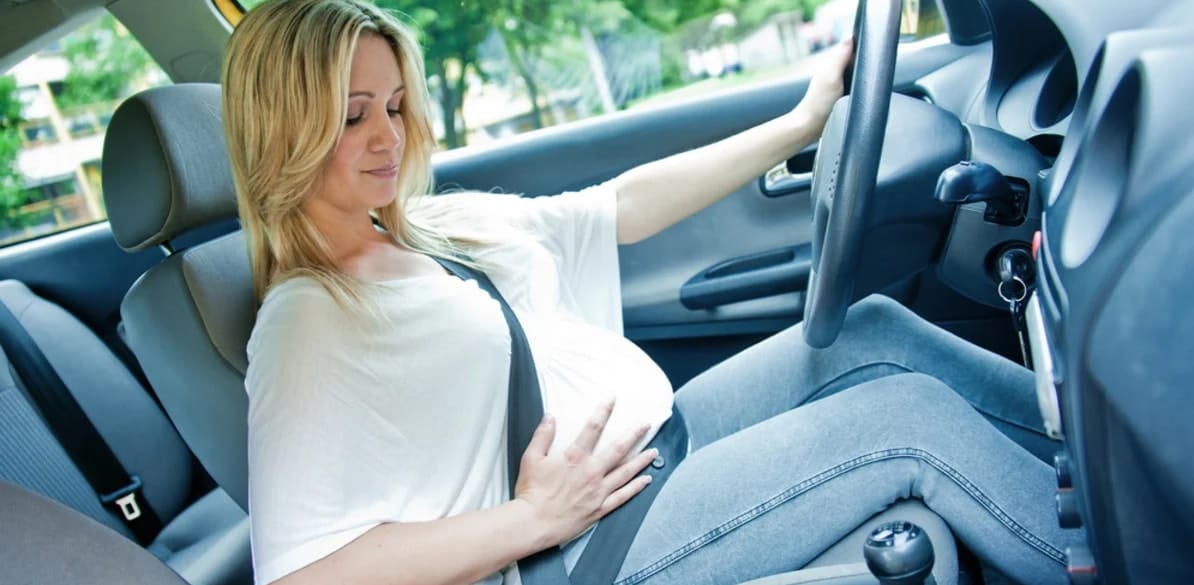What are the most dangerous months for driving during pregnancy?
The most dangerous months for driving during pregnancy

During pregnancy, certain months are riskier for driving due to physical and hormonal changes in the woman. Identifying which stage of pregnancy is the most risky for driving is crucial, since in these stages the body undergoes significant transformations that may affect the woman’s ability to drive safely. Taking the necessary precautions during these periods helps to reduce the risk of an accident and protect the health of both mother and baby.
Knowing which times are the most vulnerable allows pregnant women to better plan their trips and adapt their driving habits to the needs of the specific moment. It is essential to be aware of the symptoms and changes that can influence a mother-to-be’s ability to drive, as well as the recommendations for driving safely.
Factors that increase the risk over these months
Many people wonder, is it bad to drive while pregnant? The increased risk in certain months of pregnancy is due to multiple factors. Fatigue, nausea, dizziness and changes in balance are common, affecting the mother-to-be’s ability to react at the wheel.
In addition, an expanding belly can make it difficult to operate vehicle controls and use seat belts correctly. That is why it is vital to be aware of these risks and take preventive measures.
First trimester: driving risks and precautions
The first trimester of pregnancy is critical due to rapid hormonal and physical changes. These changes can impact the mother-to-be’s ability to concentrate and react while driving.
Why is driving in the first trimester a risk?
A common question among expectant mothers is: can I drive while pregnant? During the first trimester, pregnant women often experience symptoms such as nausea, dizziness and extreme fatigue. These symptoms can appear unexpectedly, increasing the risk of incidents at the wheel.
On top of this, hormonal changes can affect your mood and ability to concentrate, which can be dangerous when driving. For more information, we have a guide to 10 things you should not do behind the wheel if you are pregnant.
Tips for driving during the first trimester
To minimize risks during the first trimester we recommend:
- Stopping frequently to rest.
- Avoiding driving long distances.
- Keeping a bottle of water and healthy snacks at hand to avoid dehydration and hypoglycemia.
- Adjusting the seat and mirrors to ensure a comfortable and safe posture.
- Using safety belt adaptation devices for pregnant women.
Final weeks of pregnancy: staying safe behind the wheel
The third trimester of pregnancy is also a high-risk period for driving due to the size of the belly and the proximity of labor.
How late in pregnancy is it safe to drive?
A frequent concern among expectant mothers is determining how far into their pregnancy it is safe to drive. In general, many women are able to drive for most of their pregnancy. However, the decision to keep driving should be based on an assessment of personal comfort and safety.
As pregnancy progresses, especially in the third trimester, physical changes can affect posture and vehicle handling. It is therefore important to consider how far into your pregnancy you can drive without compromising safety.
Driving challenges in the third trimester
During the third trimester, the woman’s expanding belly may make it difficult to access and operate the vehicle’s controls. Fatigue and Braxton Hicks contractions can also affect your ability to drive safely. There is also an increased risk of pregnancy-related medical emergencies during this period.
To know when it is advisable to avoid driving it is crucial to be well informed. It is advisable to consult a doctor to get personalized guidance based on your health status and the specific needs of each stage of your pregnancy.
Tips for driving during the third trimester
To ensure safe driving during the third trimester consider:
- Limiting time behind the wheel and making frequent stops.
- Making sure the seat belt is correctly positioned, with the lower belt under your belly and the upper belt between your breasts.
For more information, we have an article full of pregnancy seat belt tips. - Avoiding driving if you feel significant contractions or discomfort.
- Always carrying a charged cell phone and your doctor’s contact information.
Recommendations for driving while pregnant
Driving during pregnancy involves taking extra precautions to protect both the mother and the baby. Here are some general recommendations.
Proper seat belt position for pregnant women
It is essential to use the seat belt correctly to protect both the mother and the baby. The belt should be positioned as follows:
- The lower strap should go under the belly, adjusting it to the hips.
- The upper strap should go between the breasts and fit across the collarbone.
- Avoid the belt passing over the belly to reduce the risk of injury in the event of a crash.
When is it advisable to avoid driving?
Although many women can drive during much of their pregnancy, there are times when it is best to avoid driving:
- If you experience symptoms like dizziness, blurred vision or contractions.
- During the final weeks of pregnancy, when the risk of premature delivery is the greatest.
- If your doctor has recommended bed rest or specific restrictions.
- In situations of medical emergency or in the event of pregnancy complications. Avoiding risks when going to the hospital during labor is essential for the safety of you and your baby.
For more information on safe driving during pregnancy, we recommend reading about the use of cushions for expectant mothers.
